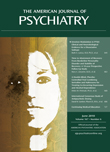This is a very readable book, though if you leave the book jacket on when you are in the airport or flying, you may garner some scrutiny as the macabre face behind the letters E V I L is a bit frightening. The content of the book itself is frightening. Stone has laid out a lifetime professional compilation of the cases of murderers he has interviewed and/or read extensively about and upon which he has clearly thought long and hard. In the world of "lumpers" and "splitters," Stone may qualify as a "splitter."
In the spirit of Dante Alberghetti, Dr. Stone has constructed a 22-tier scale of evil. His lower levels deal with the taking of life through misperception or psychosis. The higher levels deal with serial homicides associated with sadism and a lack of remorse. Cases are graphically but not pruriently portrayed. To this end, the book can be read by both a popular and a professional readership. Stone's characters rise from the pages with clarity and, for many, a chilling sense of horror and detachment. Readers will have the opportunity to meet Ted Bundy, the members of the Manson family, and the likes of David Parker Ray.
The book does go beyond a mere cataloging of crimes of murder, mayhem, and sadism. It reflects upon whether one can review such killers and their deeds and still come away with the notion of our fellow citizens simply doing evil deeds or whether after reading through this volume one will rest less comfortably with a premise that evil (or Satan or Beelzebub) is a palpable entity inhabiting our globe.
Stone also broaches the questions as old as Abel and Cain about "the bad seed" and the determinism of the genome, and the issues of abuse and childhood trauma in the genesis of homicide. He also touches on traumatic brain injury and the "functional" psychiatric disorders, such as schizophrenia. Unfortunately, but realistically, the answers to the genesis and therefore the control or prevention of evil deeds is not to be found within this volume; there is only further reflection on these issues.
Who might be the readership to whom I might recommend this work? Certainly, those who are clinicians in forensic psychiatry would appreciate experiencing vicariously Stone's lifetime history in this field in a type of compare and contrast for our own experiences. I found myself placing my homicidal forensic patients into his Dante-like scale of evil. I do believe, however, that there is a broader readership who would appreciate this book. I suspect these readers are those who don't want to stand next to the "real thing" and smell the breath of the killer, or see his or her remorse or lack thereof, or experience within the prison interview cell the presence of evil. Yet, they would appreciate the "virtual tour" of this side of our humanity (or lack thereof). This is, indeed, a virtual tour (de force).
I must reflect, however, that the book raised questions for me, not so much about evil, not even so much about the murderers whose biographies were sketched but about the intent of the work. Yes, there is a foreword and yes, Professor Kernberg writes an afterword, but is this a work to 1) show others "what I have seen"; 2) illuminate those who have taken human life; 3) seriously categorize killers within Western culture; 4) elucidate the causes of evil behavior; or 5) maybe allow us to assure our own humanity and detachment from evil by affirming that we are just not like those people chronicled within? Certainly, the author accomplished item 1. I believe the minibiographies accomplish item 2. However, the grand masters of evil, those who have perpetrated political atrocities, such as Hitler and Pol Pot, are excluded from this "Murderer's Row." In regard to item 3, I did not find the 22 tiers of evil useful beyond being a filing system to keep track of the players. It did not go to the issue of etiology or pathogenesis (and I, too, have traveled that road), but I do not see the utility promised within Dr. Stone's scale. Regarding item 4, the book touches on the monoamine oxidase A gene and violence, on head trauma and violence, and on some psychophysiological and imaging examples, but there is a burgeoning and quite sophisticated literature on low serotonin, epilepsy, genetic variance, stress, and neuropeptides in the genesis of aggression, which are in the nascent states of research in the human animal but are not well reviewed in this volume. Regarding item 5, Stone allows us to escape with the smug assurance that we are not "they." I think inclusion of the work of Zimbardo's prison experiment or Milgram's shock paradigm would have provided a balancing warning that given the right circumstances we might all hold within our personal genome the attributes to become Cain.
As you can see, these 430 pages prompted a good deal of reflection and conversation. In this spirit, I would recommend the book to you. It is "comfortable" reading, but bring a brown book cover if you are going to read it in public.

